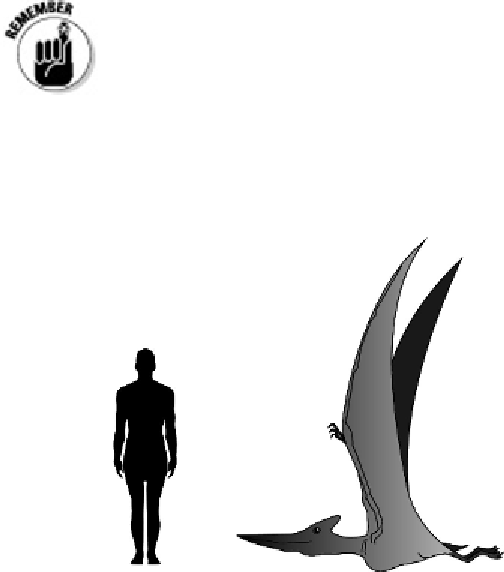Geology Reference
In-Depth Information
The first vertebrate animals to fly were Mesozoic reptiles called
pterosaurs.
Most of the pterosaurs were small, about the size of the birds you might see in
your backyard. (They were not birds though!) Some scientists have suggested that
the largest pterosaurs, like the
Pteranodon
illustrated in Figure 20-5, were probably
too large to fly using their relatively small and weak wing structure.
Figure 20-5:
A fly-
ing reptile of the
Mesozoic, the
Pteranodon.
Pterosaurs had hollow bones like modern birds, and some may have had hairy or feath-
ery coverings. They ate fish and, unlike most reptiles, were warm-blooded.
Flocking together
Fossils of reptiles and early bird-like animals from the Mesozoic era have left scientists
to puzzle over what, exactly, is the relationship between reptiles and birds. Modern rep-
tiles and birds share common features such as egg laying and certain skeletal character-
istics that indicate they probably have a common ancestor. Some fossil finds, such as
Ar-
chaeopteryx,
are clearly birds with many reptilian features. These common traits,
however, are not enough to confirm that Archaeopteryx is the link between reptiles and
modern birds.
Other contenders for the title of earliest bird include small, fragmentary skeletons with
bird-like features that date to near the end of the Mesozoic. These fossils of
Protoavis
lack feathers, which leads some scientists to believe they are small dinosaurs of the
theropod group. Keep reading for details on theropods and other dinosaurs.




